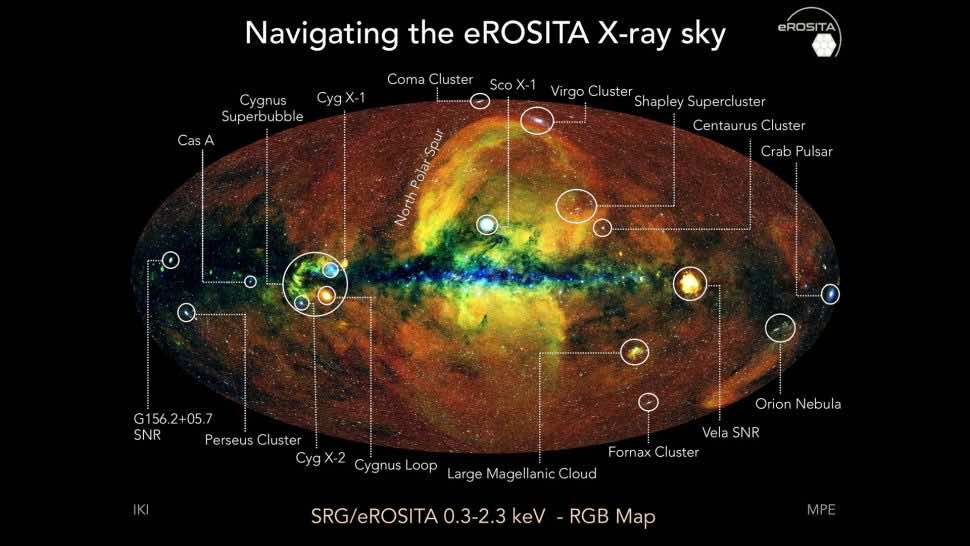A German-built space telescope has created the most detailed map of black holes and neutron stars across our universe, revealing more than 3 million newfound objects in less than two years.
At first glance, these glittering white dots on a black background looks like any other night sky. However, this image actually translates something much cooler; those white spots are actually thousands of supermassive black holes captured via radio signals. It’s the most detailed map of black holes, over 25,000 of them ever produced to date.
The space observatory called eROSITA, launched in 2019, is the first space-based X-ray telescope capable of imaging the entire sky. The main instrument aboard the Russian-German Spectrum-Roentgen-Gamma mission sits in a region known as Lagrange point 2. From this point, eROSITA has a clear view of the universe, which it captures with its X-ray detecting instruments.
Last month, the team behind eROSITA, led by scientists from the Max Planck Institute for Extraterrestrial Physics in Germany, released the first batch of data acquired by the instrument for the wider scientific community. The telescope has already made some spectacular discoveries, such as revealing a batch of gigantic X-ray bubbles zapping their way out from the centre of our galaxy. Now, the space instrument eROSITA is poised to discover some long-standing cosmological mysteries, including the distribution of the elusive dark energy in the universe, the mission’s senior scientist Andrea Merloni told Space.com.
“For the first time, we have an X-ray telescope that can be used in very similar ways as the large field optical telescopes that we use today,” said Merloni in the report. “With eROSITA, we cover the entire sky very efficiently and can study large-scale structures, such as the entire Milky Way.”
All-sky related surveys like the European Space Agency’s Gaia mission or the ground-based Very Large Telescope of the European Southern Observatory view vast areas of the sky at one stretch, enabling astronomers to realize the motions of the entire populations of stars and other celestial objects. Gaia, for example, observes nearly two billion stars in the Milky Way while measuring their positions in the sky and distances from Earth with unprecedented accuracy.
“Large survey telescopes are now quite commonplace because they are very useful to study cosmology [of the cosmos’ evolution] and things such as dark energy,” explained Merloni in the report.
“But optical telescopes are much easier to design than X-ray telescopes,” added Merloni.
However, some of the most noteworthy objects in the Universe don’t emit light at visible wavelengths and therefore are mostly invisible to optical telescopes. That includes black holes and neutron stars. In addition, distant galaxy clusters are more easily observed in X-rays.
“The X-ray telescopes so far have been able to look very deep into the centre to observe the early universe,” said Merloni in the report. “But it has always been very difficult to compile large populations [of neutron stars, black holes, and distant galaxy clusters] and create a large catalogue that you could then use to study their cosmological evolution.”
Our universe has a lot to offer; therefore, if scientists want to know about how it has and will continue to evolve, they need to work on the capabilities of present and future X-ray telescopes, including other wavelengths, like ultraviolet and infrared. A few months from now, the James Webb Space Telescope will launch into space like eROSITA’s, enabling us to more produce data for scientific inquiries and solve the mysteries of the Milky Way and the ancient depths of the early universe.

